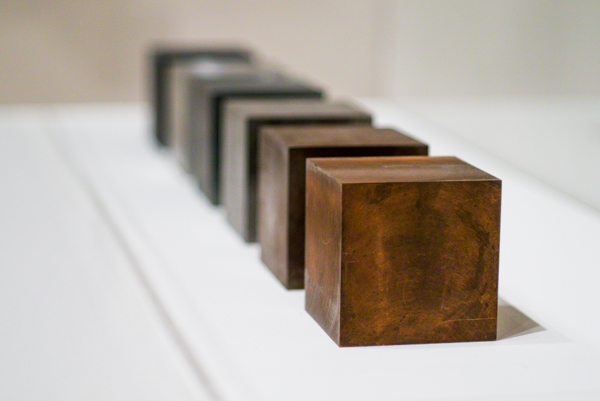

On Aug. 27 the Dorsky opened a new exhibit titled “Dick Polich: Transforming Metal into Art”. Curated by Daniel Belasco, this exhibit showcases works of bronze sculptures created by well-known artists such as Joel Shapiro, Frank Stella and Tom Otterness—sculptor of the recently placed statue on campus the “Gulliver”.
The idea of doing this exhibition started about a year and a half ago when the Dorsky had a staff visit at the Polich Tallix Art Foundry. At that moment he realized there had never been an exhibition looking at Polich and his contributions to contemporary art. He said he felt something had to be done.
“It was an unusual choice to focus on Polich because he isn’t an artist, he doesn’t think of himself as an artist,” Belasco said. “Instead Polich is craftsman who assists an artist in fulfilling his or her vision.”
According to Belasco, he chose to divide the exhibit into three sections because he “did not want the art to be overwhelmed by the documentary material.” The exhibit includes drawings that show the process of how the sculptures have been produced at the foundry. One example includes a step-by-step installation showing the complicated process of how to make a bronze sculpture, created by Otterness. Belasco referred to this piece as “unusual and special, that has educational value.”
In setting the exhibit, Belasco was assisted by Rachel Beaudoin, a fourth-year art history major who has worked with him since spring 2013.
She created a document that contains all the works that were created by Polich and are now public sculptures or monuments. This document was then used for an interactive map featurd in the exhibit.
“This exhibition is particularly interesting because it presents a different side to art making that isn’t often seen or exhibited. There are a lot of well known and established artists whose work will be shown and they all connect to Dick Polich as they had their work produced at his foundry,” Beaudoin said. “The entire process of casting and fabrication is fascinating and is shown in stages through different works in the show. I think this is quite a unique exhibition.”
In addition to sculptures and a documentary , the exhibit also features an interactive map created by Joshua Simons, the senior research associate for the Center for Research Regional Education and Outreach (CRREO). According to Belasco, the interactive map is a Google Map in which a person can click on a pin which will then reveal basic information about works of art such as the artist, title, year and a photo of the piece. Simons said the map is a nice way to demonstrate the way the college influences the region.
Belasco added that he hopes to incorporate social media by including hashtags viewers can use. There will be an opening reception for the exhibit “Dick Polich: Transforming Metal into Art” on Saturday, Sept. 6 from 5 to 7 p.m.
